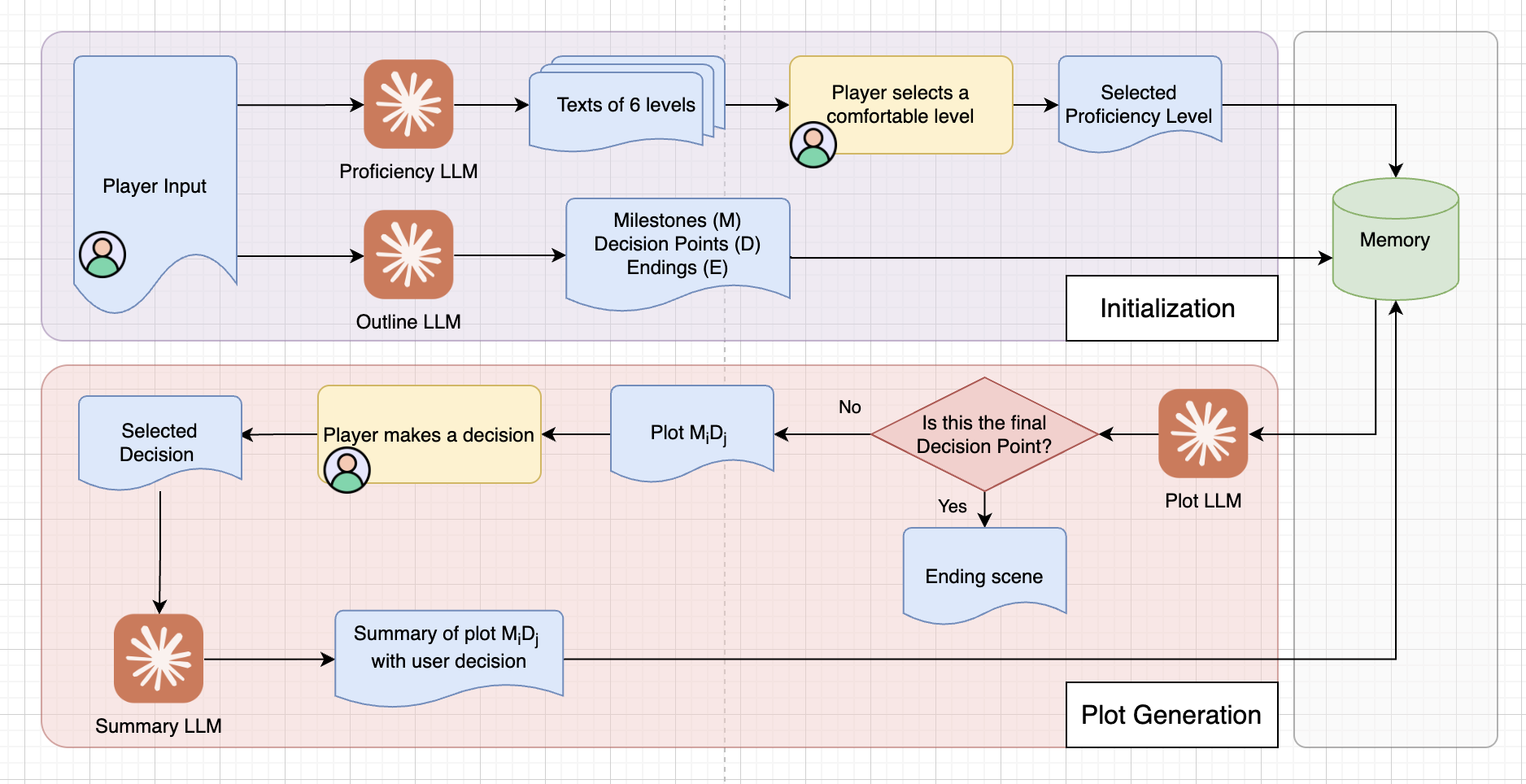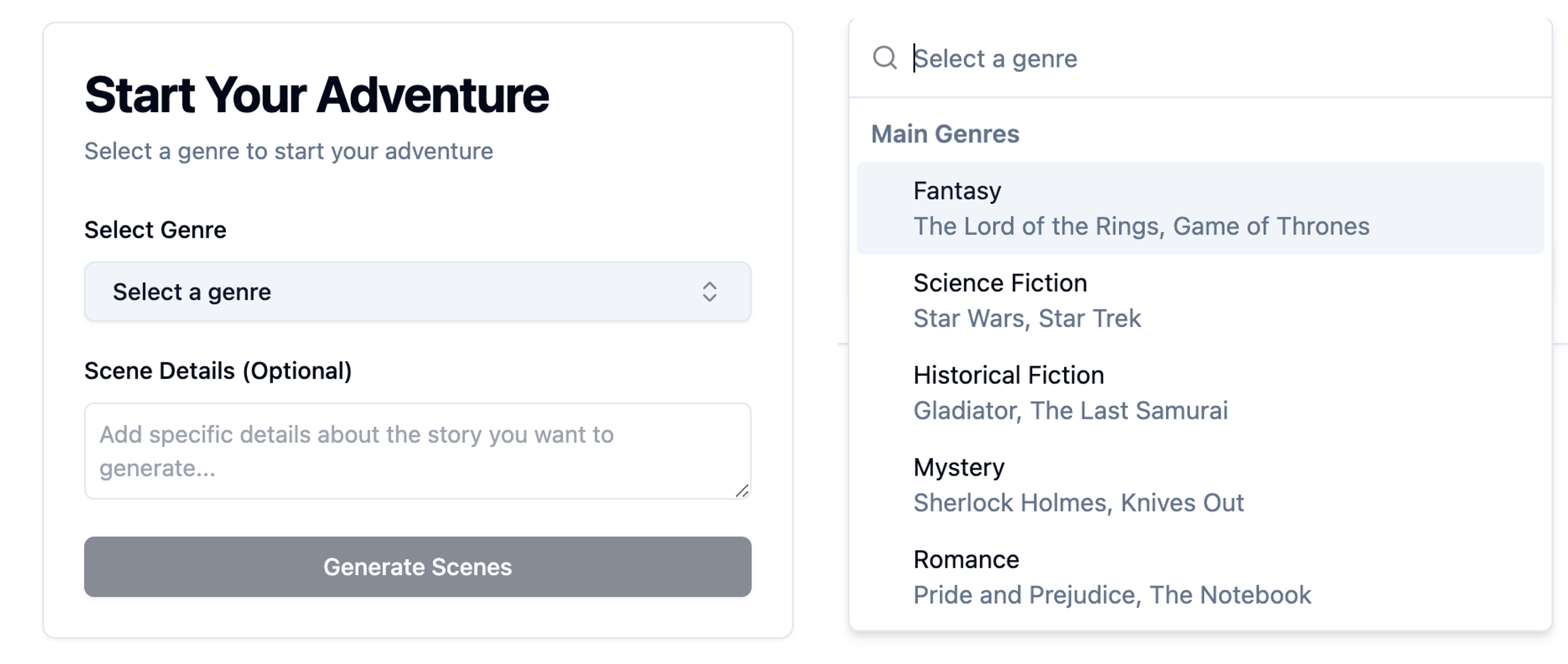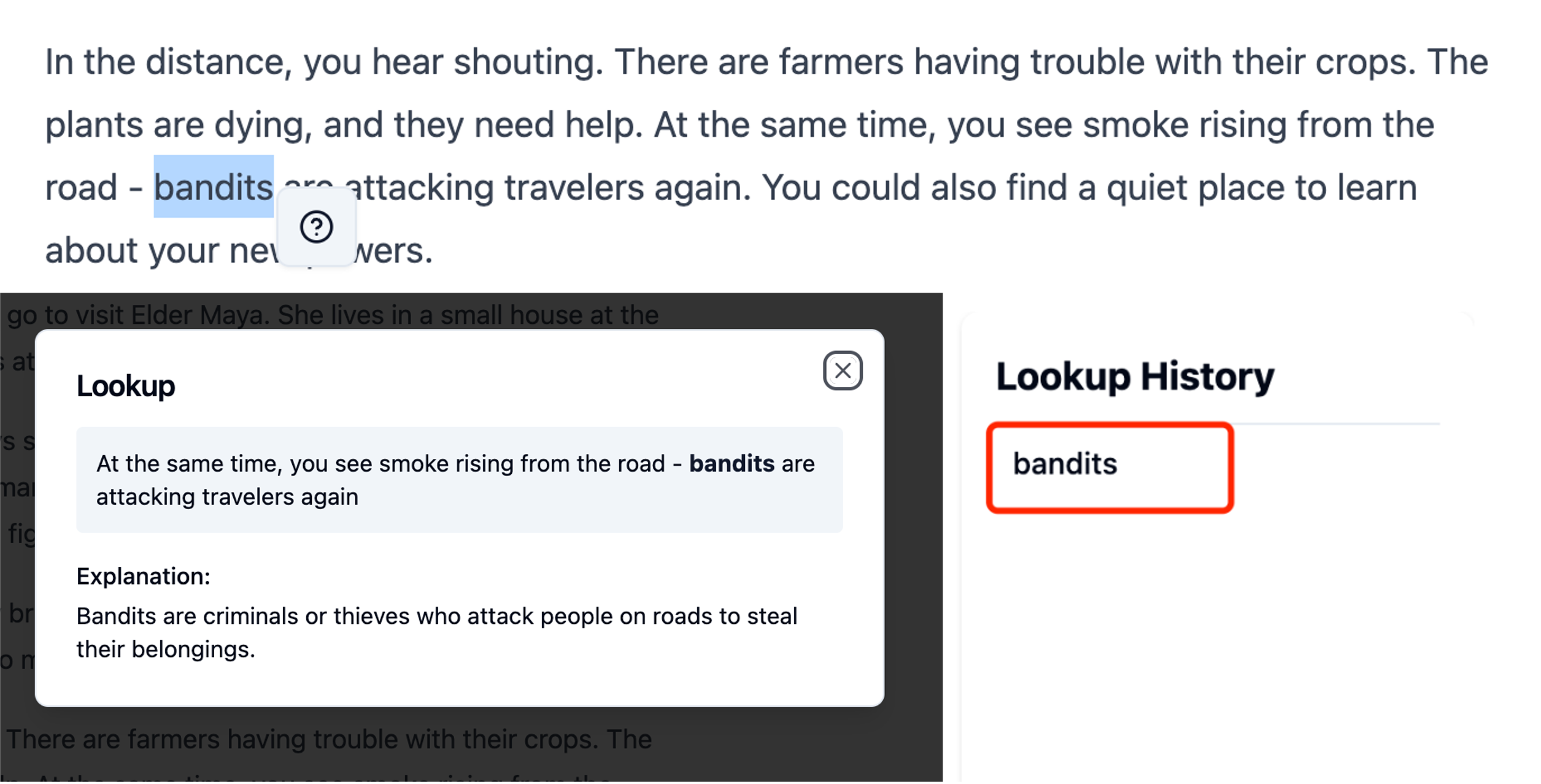- The paper's main contribution is integrating dual LLM pipelines that dynamically generate adaptive narratives tailored to six CEFR proficiency levels.
- It employs a context-sensitive vocabulary assistant that enhances vocabulary retention by providing interactive definitions during gameplay.
- Pilot study results indicate high learner engagement and positive usability perceptions, while highlighting areas for narrative coherence and multimodal improvements.
Summary of "GenQuest: An LLM-based Text Adventure Game for Language Learners"
GenQuest is an innovative approach for second language (L2) acquisition employing LLMs to generate personalized, narrative-driven gameplay experiences. The game is designed for English as a Foreign Language (EFL) learners and focuses on providing immersive storytelling that adapts to individual player choices and proficiency levels. This paper discusses the architecture and implementation of GenQuest, its pedagogical impact, and findings from a preliminary evaluation with university students in China.
Game Design and Architecture
GenQuest employs dual LLM pipelines to generate both the narrative content and provide embedded language assistance. The narrative structure consists of predetermined genres and dynamic story development, driven by user input and decision-making at various milestones and decision points (Figure 1). The proficiency LLM tailors content across six levels of the Common European Framework of Reference for Languages (CEFR), optimizing language complexity to suit learner needs.

Figure 1: Architecture and workflow of the story module.
The story module integrates pipelines for player input and narrative generation, which includes the initialization pipeline and plot generation pipeline. In choosing narrative genres, learners exercise their creativity or rely entirely on algorithmic generation. A structured outline with key events provides coherence amidst branching paths, ensuring learner agency within a controlled narrative framework.

Figure 2: User input at game initiation.
Language Module and User Experience
The language module introduces a vocabulary assistant that provides context-sensitive explanations during gameplay (Figure 3). This module leverages GPT-4o to offer lexically appropriate definitions, further enhancing vocabulary acquisition. Players can interactively query unknown text strings, and these queries are archived for extended paper, fostering both immediate and retrospective learning.

Figure 4: Example texts for six CEFR levels.

Figure 3: Language query and query history.
Pilot Study Findings
An empirical evaluation assessed GenQuest's effectiveness in vocabulary acquisition and user perception through a pilot paper involving nine EFL learners over five days. The average vocabulary score attained was 13.44 out of 20, indicating significant vocabulary retention attributable to interactive gameplay experiences. The paper revealed alignment between learner proficiency and their selected difficulty levels, inferring that simplified content correlates with higher engagement and retention scores among lower proficiency learners.
Participants' Perceptions and Game Improvement
Survey results from the Technology Acceptance Model (TAM) indicated favorable learner perceptions of both the game's utility and usability. Participants lauded the game's motivational qualities while highlighting areas needing refinement such as narrative coherence and multimodal engagement. Recommendations for enhancements included bilingual glosses, visual aids, and interactivity improvements to enrich user experiences.
Discussions and Implications
GenQuest exemplifies the transformative potential of LLMs in educational applications, providing adaptive challenge levels alongside immersive narrative engagement. Effective implementation requires balancing complexity with pedagogical relevance, ensuring coherent dialogue even amidst branching narratives. The integration of multimodal elements, like illustrations and bilingual support, could further improve educational outcomes and learner satisfaction.
Conclusion
The pilot paper underscores GenQuest's promise for engendering vocabulary learning through narrative gameplay, demonstrating that LLM-powered applications can adeptly support language acquisition objectives. While favorable learner perceptions affirm its utility, iterative design improvements remain essential. Future expansions may include additional languages and richer interactive features, broadening GenQuest's applicability in diverse learning contexts.



